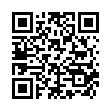|
This article is cited in 3 scientific papers (total in 3 papers)
Robotics, Automation and Control Systems
Method of dynamic selection of satellite navigation system in the autonomous mode of positioning
S. G. Popova, V. S. Zaborovskya, L. M. Kurochkina, M. P. Sharagina, L. Zhangb
a St. Petersburg and Peter the Great St. Petersburg Polytechnic University
b East China Normal University (ECNU)
Abstract:
Today, the list of applications that require accurate operational positioning is constantly growing. These tasks include: tasks of managing groups of Autonomous mobile robots, geodetic tasks of high-precision positioning, navigation and monitoring tasks in intelligent transport systems. Satellite navigation systems are a data source for operational positioning in such tasks. Today, global and local satellite navigation systems are actively used: GPS, GLONASS, BeiDou, Galileo. They are characterized by different completeness of satellite constellation deployment, which determines the accuracy of operational positioning in a particular geographical point, which depends on number of satellites available for observation, as well as the characteristics of the receiver, landscape features, weather conditions and the possibility of using differential corrections. The widespread use of differential corrections at the moment is not possible due to the fact that number of stable operating reference stations is limited - the Earth is covered by them unevenly; reliable data networks necessary for the transmission of differential corrections are also not deployed everywhere; budget versions of single-channel receivers of the navigation signal are widely used, which do not allow the use of differential corrections. In this case, there is a problem of operational choice of the system or a combination of satellite positioning systems, providing the most accurate navigation data. This paper presents a comparison of static and dynamic methods for selecting a system or a combination of satellite positioning systems that provide the most accurate definition of the object's own coordinates when using a single-channel receiver of navigation signals in offline mode. The choice is made on the basis of statistical analysis of data obtained from satellite positioning systems. During the analysis, the results of post-processing of data obtained from satellite navigation systems and refined with the use of differential corrections of navigation data were compared.
Keywords:
navigation of autonomous mobile objects, statistical analysis of navigation data, methods of satellite positioning system selection.
Received: 21.02.2019
Citation:
S. G. Popov, V. S. Zaborovsky, L. M. Kurochkin, M. P. Sharagin, L. Zhang, “Method of dynamic selection of satellite navigation system in the autonomous mode of positioning”, Tr. SPIIRAN, 18:2 (2019), 302–325
Linking options:
https://www.mathnet.ru/eng/trspy1047 https://www.mathnet.ru/eng/trspy/v18/i2/p302
|

| Statistics & downloads: |
| Abstract page: | 206 | | Full-text PDF : | 83 |
|




 Contact us:
Contact us: Terms of Use
Terms of Use
 Registration to the website
Registration to the website Logotypes
Logotypes








 Citation in format
Citation in format 
